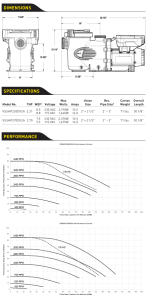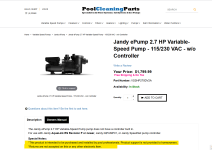I am in the process of upgrading from a
SHPM 2.0-2 two speed pump to the recommended VSSHP220DV2A (2.2 Hp). Well, I received a VSSHP270DV2A (2.7 Hp). I contacted the company to point out the mistake and was given the option to keep it. I told them no, the 2.2 Hp was recommended and now I am waiting for the shipping label to ship on Monday. I really don’t feel like lugging around a 70 lb pool pump to FedEx but willing to.
My question is: Do I REALLY need to go with 2.2? Will the 2.7 work for my pool? Is it too big? My gut tells me I need to go with 2.2 but my pool equipment tells me it can handle it (Both are a direct replacement dimension wise). Pool has 2” pipe. It is a 20K gallons, with attached spa, Pebble Tec Tahoe Blue, 2 HP SHPM 2.0-2 Stealth Pump, CV460 Filter, PLC 1400 SWG, PB-60 Booster Pump TR28P Cleaner, WaterLink Spin Touch Tester.
SHPM 2.0-2 two speed pump to the recommended VSSHP220DV2A (2.2 Hp). Well, I received a VSSHP270DV2A (2.7 Hp). I contacted the company to point out the mistake and was given the option to keep it. I told them no, the 2.2 Hp was recommended and now I am waiting for the shipping label to ship on Monday. I really don’t feel like lugging around a 70 lb pool pump to FedEx but willing to.
My question is: Do I REALLY need to go with 2.2? Will the 2.7 work for my pool? Is it too big? My gut tells me I need to go with 2.2 but my pool equipment tells me it can handle it (Both are a direct replacement dimension wise). Pool has 2” pipe. It is a 20K gallons, with attached spa, Pebble Tec Tahoe Blue, 2 HP SHPM 2.0-2 Stealth Pump, CV460 Filter, PLC 1400 SWG, PB-60 Booster Pump TR28P Cleaner, WaterLink Spin Touch Tester.
Last edited:

























